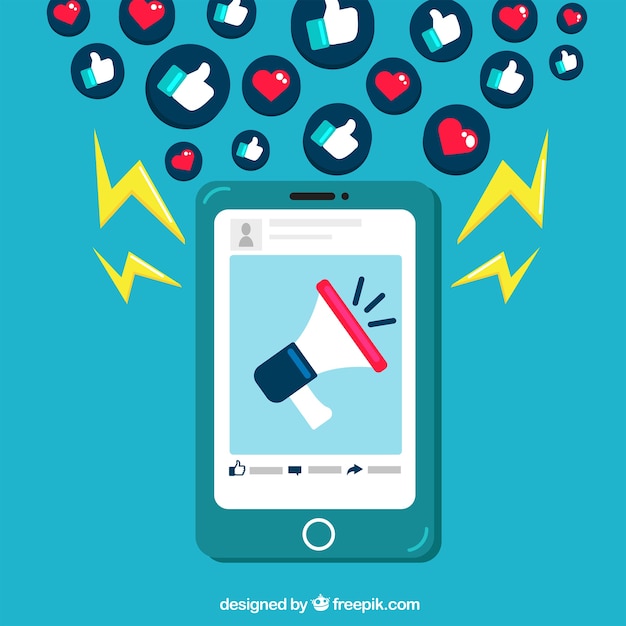
Coca-Cola has been using print ads to market its product for a long time. Although the company now uses digital advertising, its print marketing campaigns remain. The company relied heavily on the power and beauty of music and art for its marketing. Coca-Cola’s print ads have a clear theme and focus.
Coca-Cola advertisements featured illustrations of women drinking soft drinks in the late 1800s. They were created by Haddon Sundblom, the artist behind Coca-Cola Santas.
Mary Alexander, an African American women, appeared in Coca-Cola ads in the 1950s. She was featured in 15 ads during the 1950s. Her ads were meant to appeal to both genders and encourage repeat purchase. Coca-Cola's first public advertisement featured a celebrity.
Pepsi acquired Coca-Cola in 1988. The new owner tried different ways of growing the business. One way he did that was by mailing coupons to customers. Another method was through the introduction a promotional item like Cherry Coke.

These changes created new expectations for Coca-Cola Marketing. Coca-Cola needed to advertise a range of products. The company was ready to launch Open Happiness.
Coca-Cola provided a template for its print ads that was graphical and helped to get things moving. Posters with this ad would then be printed worldwide.
The company also introduced a new ad format. The new ad features a melody of five notes, which is replaced by an audio signature based on Coca-Cola sounds. These "Try not to hear this" ads are similar to the company's annual Christmas truck campaign. However, the new ad is more of a "feel-good" commercial.
The new ad features a diverse cross-section of people from around the world. The ad shows a multiracial group drinking cokes. You can choose from a variety of styles including a retro-sexy design or a modern minimalistic style.
Coca-Cola's new commercial has a very different feel for a company that has always stressed taste. This new Coca-Cola ad focuses on the brand's history, rather than the taste of the beverage.

Coca-Cola's print ads have one goal: To make the drink more appealing to consumers. The ad highlights the 5c price and makes the drink more appealing, besides its refreshing and invigorating qualities.
The ad also features synaesthesia (a science term that describes the merging and blending of the different senses). The brain is capable of creating a sense of wonder by stimulating one sense and triggering the response of another.
While the ad has succeeded in creating a new, positive mood for the Coca-Cola brand, it does not seem to have helped the company turn its financial fortunes around. Coca-Cola's 2018 revenue was down 10% from the previous year, and Q4 2018 revenues were the lowest since 2007. How has Coca-Cola done this?
FAQ
What are the basics of television advertising?
Television advertising is an extremely effective medium for reaching many people at once. It was also very costly. It can still be very powerful if used correctly.
Although there are many kinds of TV ads to choose from, all share the same characteristics. When planning any TV ad, the first thing you should do is ensure that it fits within its category. If you're running a product commercial, don't try to run a lifestyle commercial as a product commercial. Your message should be consistent throughout the entire campaign.
Remember that prime-time is the best time for your ads to be aired. This is because the majority of viewers will watch TV while they relax in front a set. You want them relaxed enough that they can focus on you words.
Finally, just because you've a lot of money doesn't mean you'll get great results. The opposite may actually be true. A University of California study found that commercials broadcast during popular shows had a lower chance of selling products than those broadcast during less-popular shows. So, if you spend a lot of money on TV advertising, ensure you do it right.
What is an advert buyer?
Advertising space is purchased by an advertiser on TV, radio and printed media.
Advertisers pay for the time their message appears.
They don't necessarily look for the best advertisement, but instead seek out the most effective way to reach their target market.
An advertiser might have details about potential customers, including their age, gender and income.
Advertisers can use these data to determine the best medium for them. For example, they might decide that direct mail would be more effective with older audiences.
Advertisers also take into account the competition. Advertisers might place their ads near similar businesses if they see them.
Advertisers should also consider how much money they have available and how long it takes to use it.
Radio advertising: What are your options?
It is important to understand the interdependence of different media types. Remember that media can complement each other and are not necessarily competitive.
Radio is best used as an extension of television advertising. Radio complements television advertising by reinforcing key messages or providing additional information.
Radio listeners may find TV commercials too long. Radio ads are typically shorter and less costly.
What is the primary purpose of advertising?
Advertising is more than selling products. It's about building an emotional connection with your customers.
Advertising is communicating ideas and values. It is about changing attitudes and minds. It's all about building relationships.
It's all about making people feel good about themselves.
If you don't understand your customers' needs, you can't market to them.
It is essential to first understand the needs and purchasing habits of your customer before you embark on any advertising project.
You can then design ads that resonate with them.
How can I select my target audience?
Start with yourself, and the people closest to you. Do you not know where to start? Ask yourself "Whom do I want to reach?"
Ask yourself the following questions: Who are my industry's most influential people? What are their daily problems? Which people are the most intelligent in my industry? Where are they located online?
Go back to the beginning when you started your business. Why did you start? How did you solve the problem?
These answers will help to identify your ideal clients. This will allow you to learn more about your ideal customers and their motivations for buying from you.
You can also look at your competitors' websites and social media pages to find clues about whom they cater to.
Once you identify your target customers, then you must decide which channels to use to reach these people. If your company offers services to real estate agents you might make a website that targets home buyers.
A blog could be created if your software is offered to small businesses.
A Facebook page for teens could be set up if you are a clothing seller. You could also set up a Twitter account if your restaurant is a business owner to help parents find kid-friendly restaurants.
It is important to remember that there are many methods of getting your message across.
What do you need to know about print advertising?
Print advertising is an effective medium for communicating with consumers. Many companies use it to promote products and services. It is designed to attract the attention of the customer.
Print ads are typically one page long and include text, images, logos and other graphics. They may also include sound, animation, video, and hyperlinks.
Here are the main types and classifications of print advertising:
1. Brochures – These are large format printed pieces that are intended to draw people into stores. Brochures can often be adorned with brightly colored images and eye-catching designs.
2. Catalogues are smaller versions than brochures. They are sent to customers who have requested specific information.
3. Flyers - These small pieces of paper are distributed at events like fairs and concerts. Flyers can be handed out at retail outlets for a small fee, but are generally free.
4. Posters – These are larger versions than flyers. They are displayed on walls, fences, and buildings. These are often created with computer software programs to grab the attention of passersby.
5. Direct mail – This is a direct mailing of letters or postcards directly to customers. These are sent to customers periodically by businesses to remind them about their business.
6. Newspaper Ads are placed in newspapers and magazines. They can be quite lengthy and often include text as well as images.
What is branding?
Your brand is your way of communicating who you are as well as what you stand behind. It's how people remember you and your name.
Branding is about creating a unique identity that distinguishes your company. A brand is not just a logo but also includes everything from your physical appearance to the tone of voice used by employees.
Because they are confident they will get what they want, a strong brand can help customers feel more comfortable buying from you. And it gives them confidence in choosing your products over those of competitors.
Apple is an example of a well-branded business. Apple's brand is well-known for its stylish design, high-quality products and outstanding customer support.
Apple's brand is synonymous with technology. People think of Apple whenever they see a computer or smartphone.
When you consider starting a business, it's important to develop a brand. This will give you and your business a face.
Statistics
- It collects money from the advertisers, keeps 32% for its role in facilitating the process, and the remaining 68% goes to the publisher (you). (quicksprout.com)
- Advertising's projected distribution for 2017 was 40.4% on TV, 33.3% on digital, 9% on newspapers, 6.9% on magazines, 5.8% outdoor, and 4.3% on radio. (en.wikipedia.org)
- Worldwide spending on advertising in 2015 amounted to an estimated US$529.43 billion. (en.wikipedia.org)
- In 1919 it was 2.5 percent of gross domestic product (GDP) in the US, and it averaged 2.2 percent of GDP between then and at least 2007, though it may have declined dramatically since the Great Recession. (en.wikipedia.org)
External Links
How To
How to Make Sponsored Ads On Facebook
Facebook has been one of the most popular social media platforms. The global population is 1.79 billion. It keeps growing each day.
Facebook is completely free. However you can pay to reach specific audiences. You can also use paid advertising options, such as promoted posts or banners.
Log in to your existing application if you have one. You can also click on "Create New App". Follow these steps:
-
Click "Add Platform," under the Apps Section.
-
Select "Advertising," then click Continue.
-
Please fill out this form and send it back.
-
After approval, you will be issued a Client ID as well as a Secret Key. Copy them.
-
and paste the keys into the appropriate fields.
-
Enter the campaign name, then choose the currency.
-
Click "Begin Campaign"
-
Follow the steps until the banner appears. Copy the URL and return to your Facebook page.
-
Paste the code into the box provided by Facebook.
-
Click "Save Changes."
-
Your ad needs to be now live
-
Repeat steps 10-12 to create each additional banner.
-
When finished, click "Continue" and proceed with the rest of the process.
-
Finalize the creation of your ad groups.
-
Once complete, click "View All Ads" to see all of your campaigns.
-
Click "Remove ads" next to each ad to remove it.
-
If you don’t see results after running your campaigns, ensure that you followed all the directions.
-
You can check the date range for your campaign.
-
You should set your budget in a sensible way.
-
Make sure to save your changes.
-
Before you submit, make sure to check the settings.
-
Wait for your ads to appear on your timeline.
-
Congratulations for a job done well!
-
Let's take a look at some ways to improve your results.